
Egg-laced custards have been around since the Middle Ages, but pastry cream is a quintessentially French creation. Both are staples in any professional bakery, but the two have very different purposes. Think of custards as a dessert base, while pastry cream is a delicious accessory.
Ingredients
When you think of custard, you might think of the nutmeg-laced, baked nursery dessert from childhood or a Mexican flan, but custard is actually any dessert or sauce that contains a liquid thickened with eggs. In most cases, milk or cream is the liquid. Custards can be thickened in one of several ways, while pastry cream typically follows one specific formula. A basic custard is thickened with only eggs. It has a fairly loose texture and requires the most finesse in preparation. If the temperature rises above 180 degrees, the custard might curdle. Oven-baked custards, such as creme brulee and flan, are examples of a basic custard. Starch-thickened custards contain both eggs and cornstarch. Pastry cream is a starch-thickened custard, as are most puddings. Starch-thickened custards are thicker and more stable than basic custards. They're less likely to curdle. Gelatin custards usually contain gelatin instead of eggs as the thickener. The protein in gelatin provides the greatest structure, creating a very dense, firm texture that can be sliced. A Bavarian cream is an example of a gelatin custard.
Use
The main difference between a custard and pastry cream is how you use it. Custards are firm, but creamy, while pastry cream is thicker because it contains more starch. Custards may be served warm, but pastry cream is almost always served cold. You can embellish a custard with a sauce, but the custard itself is the foundation of the dessert. For example, creme brulee is a soft custard topped with a burnt sugar crust. Banana pudding might be topped with bananas or graham crackers, but the custard, or pudding, is still the star of the dessert. Generally, you use pastry cream as a filling in desserts such as boston cream pie, eclairs or profiteroles, which contain other ingredients, such as cake or pastry. You can spread it between cake layers, but you never eat it alone. Pastry cream is similar to pudding, but the difference lies in its use.
Preparation
Custards can be made in a variety of ways, while pastry cream uses only one technique. Baked custards are made simply by baking milk, sugar, eggs and flavorings in a water bath until set. As the eggs heat, the proteins in them relax and uncoil, allowing the proteins to clump together and form a gel. Gelatin custards require careful softening of the gelatin mixture, as well as chilling to set them. Starch-thickened custards, such as chocolate pudding, are made by adding hot milk to beaten eggs, sugar, cornstarch and flavorings and thickening the mixture over heat until it simmers. Pastry cream is also made this way.
Flavorings
On their own, custards and pastry cream have a mild taste that readily pairs with almost any flavoring. Vanilla is a classic flavoring for both custard and pastry cream. Pure vanilla extract should be used, and not a vanilla substitute, which imparts a bitter taste. A pastry cream's flavoring is meant to complement the other ingredients in the dessert. For this reason, pastry cream usually has a subtle flavor, such as vanilla or rum. As stand-alone desserts, custards may have stronger flavorings, such as chocolate or banana.
Related Articles
A Substitute for Meringue

How Long in Advance Can You Cook Creme ...

How to Fix Grainy Whipped Ganache

What Is the Difference Between Creme ...
Cream vs. Creamer
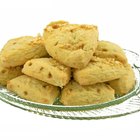
What Is the Difference Between Scones & ...
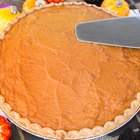
How to Make Pumpkin Pie
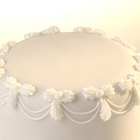
How to Make a White Decorator Icing
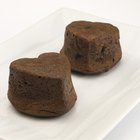
What Is a Souffle Dish?

How to Harden Up Whipped Cream

Do Boston Cream Pie Cupcakes Need ...
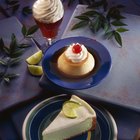
Sugar-Free Coconut Cream Pie

How to Thicken a Lemon Filling in Baking
Differences in Half & Half Vs. Cream ...

Can You Make Chocolate Ganache Frosting ...
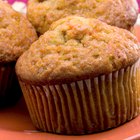
Substitute for Manioc Starch

How to Use Gelatin to Thicken Frosting

List of French Pastries

How to Thicken Cream Filling

How to Make Chocolate Fudge Buttercream ...
References
Writer Bio
Julie Christensen is a food writer, caterer, and mom-chef. She's the creator of MarmaladeMom.org, dedicated to family fun and delicious food, and released a book titled "More Than Pot Roast: Fast, Fresh Slow Cooker Recipes."
Photo Credits
Brand X Pictures/Brand X Pictures/Getty Images